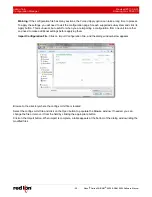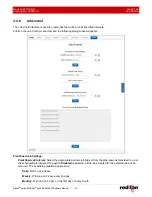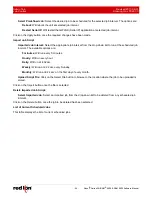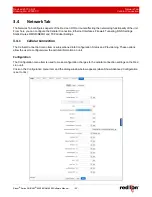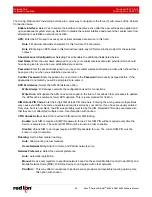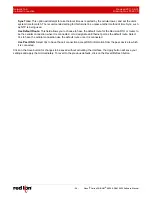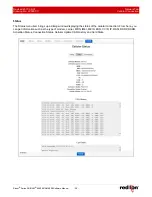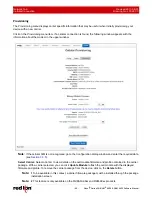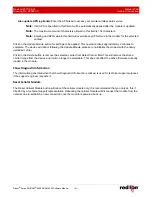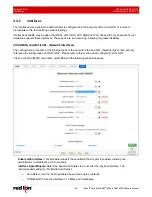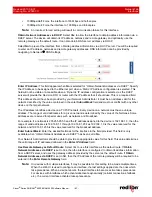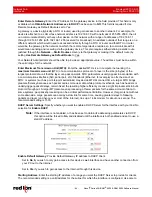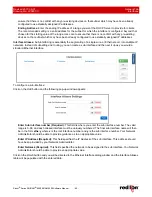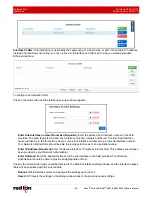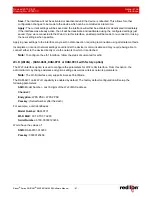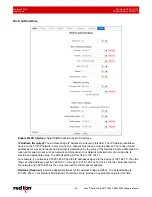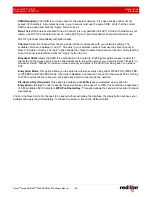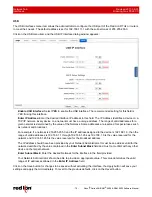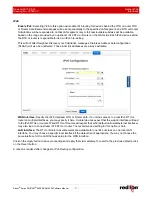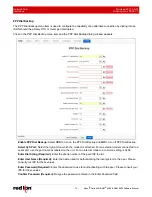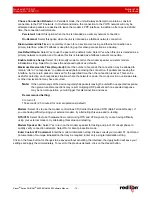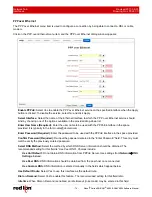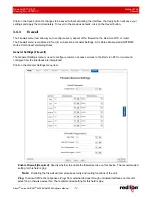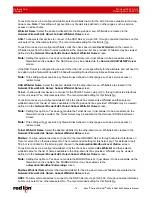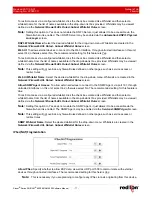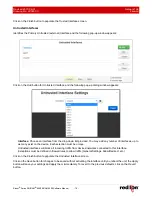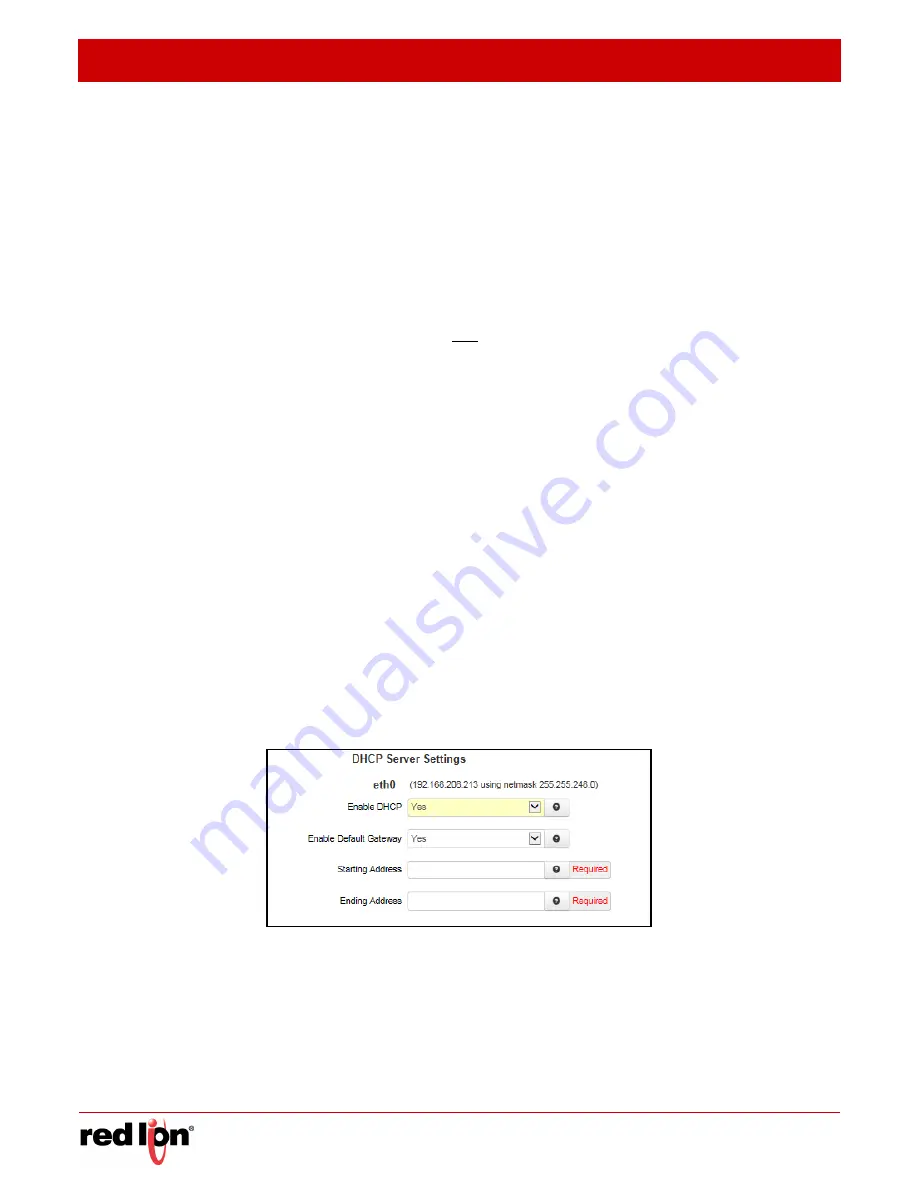
Network Tab
Revised 2017-08-31
Interfaces
Drawing No. LP0997-C
- 64 -
Sixnet
®
Series SN/RAM
®
6000 & RAM 9000 Software Manual
Enter Remote Gateway:
Enter the IP Address for the gateway device in the field provided. This field is only
available when
Obtain Network Addresses via DHCP
has been set to
NO
. This field is required if Use
Remote Gateway as Default Route is set to Yes.
A gateway is a device (typically a RTU or router) used to gain access to another network. For example, if a
device is attached to a LAN whose network address is 192.168.1.0 with a netmask of 255.255.255.0, then it
can communicate directly with any other device on that network with a range of addresses of 192.168.1.1
through 192.168.1.254 (with 192.168.1.255 reserved for broadcast). An address outside of that range is on a
different network which would need to accessed indirectly through a RTU or router and that RTU or router
would be the gateway to the network on which the remote target device resides, so to communicate with it
would mean sending and receiving via the gateway device. This also requires either defining a static route
(defined through the
Network
→
Static Routes
screen) via that gateway or making it the default route (by
setting
Use Remote Gateway as Default Route
to Yes.
Your Network Administrator should be able to provide an appropriate value. The address must be one within
the valid range for the network.
Enter Maximum Transmission Unit (MTU):
Enter the desired MTU size. In computer networking, the
maximum transmission unit
(MTU) of a communications protocol of a layer is the size (in bytes) of the
largest protocol data unit that the layer can pass onwards. MTU parameters usually appear in association with
a communications interface (NIC, serial port, etc). Standards (Ethernet, for example) can fix the size of an
MTU; or systems (such as point-to-point serial links) may decide MTU at connect time. A larger MTU brings
greater efficiency because each packet carries more user data while protocol overheads, such as headers or
underlying per-packet delays, remain fixed; the resulting higher efficiency means a slight improvements in bulk
protocol throughput. A larger MTU also means processing of fewer packets for the same amount of data. In
some systems, per-packet-processing can be a critical performance limitation. However, this gain is not without
some downside. Large packets can occupy a slow link for some time, causing greater delays to following
packets and layer (and hence over most of the Internet), ties up a 14.4k modem for about one second. The
recommended setting is 1500.
DHCP Server Settings:
Specify whether you want to enable a DHCP Server for the interface with your Yes/No
selection for
Enable DHCP
.
Note:
If the interface is not enabled, or has been set to obtain its addressing parameters via DHCP,
this option will be forced to
No
, and disabled until the interface is both enabled and set to use a
static IP address.
Enable Default Gateway
: Provide Default Gateway IP address to DHCP Client.
Set to
No
if you wish to only gain access to this device’s web interface and have another connection from
your PC out to the Internet.
Set to
Yes
if you wish to gain access to the Internet through this device.
Starting Address
: Enter the starting IP address of a range you want the DHCP Server to provide for clients.
The recommended setting is a valid address for the subnet for which the interface is configured. Use care to

